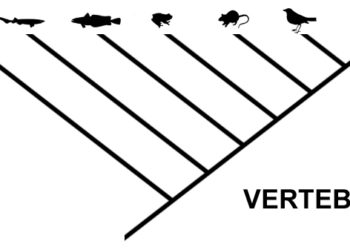The organizations that facilitate scholarly communication have been under tremendous pressure in this unrelenting year. For example, the enormous efforts to accelerate scientific communications also exposed weaknesses in preprint and journal editorial processes. Yet, in periods of disruption, commercial publishers have traditionally found opportunities to make capital investments that ultimately strengthen their relative position in the market — opportunities that are not necessarily available to their not-for-profit counterparts. With this in mind, we offer up the beginnings of an analysis of the state of not-for-profit publishing today. Ultimately, we see an enormous divergence between the STEM societies on the one hand and humanities-focused societies and university presses on the other.
Today’s piece synthesizes several probes that we have conducted in recent months. The first examined university presses, looking at how they have been navigating current challenges and also how they are looking ahead to a very different future. Subsequently, we examined scholarly societies, looking across an array of fields not only at their publishing but also membership and meetings. For these probes, we conducted candid interviews with an array of executives. Today’s piece draws from the findings of these projects.

Common Issues
There were a number of similarities between university publishers and societies in how they were coping with the pandemic.
We heard about broad success with a quick pivot to a virtual workforce. While some forms of work require computer systems that are not typically available at home, it was simple enough for staff to move these out of the office, and many publishing processes had already been converted to a digital workflow. There were a number of interviewees who expected to move towards greater remote work after the pandemic, with some speaking about opportunities to reduce their payments for office space.
Looking outside their organizations, it is clear that revenue diversity is especially important during a downturn. Societies have a mix of income from publishing, membership, and meetings while university presses depend primarily on publishing revenues. While some university presses have journal programs, many are largely or even solely dependent on their book publishing operation, which remains comparatively reliant on unit sales. In contrast, journals are the chief publishing focus of societies, with the benefit of recurring revenues from subscriptions. University presses are more concerned about how libraries will continue to invest in the monograph, and this has introduced greater uncertainty in their revenue projections.
For the most part, 2020 shaped up to be a better year than many publishers feared. Journal revenues were mostly locked in before the pandemic hit, and guarantees played a reassuring role for those societies that had contracted for business services with larger providers. Book revenues, which many anticipated would drop significantly, recovered in part through strong digital sales and an improving retail sector. Some societies saw decreases in their meeting revenues, but managed to renegotiate space commitments which helped to mitigate the impact of their annual meeting moving from in-person to virtual on short notice.
Almost everyone was planning for a year of financial uncertainty in 2021. Many were in the midst of scenario planning that anticipated a drop in revenues in some or all parts of their program.
STEM Societies
While this year has yielded some meaningful challenges for STEM societies, in general they have not faced threatening business disruptions.
Journal subscriptions, an important source of revenue for many STEM societies, have continued almost unabated up to this point. Pressures to develop open access offerings continued to rise but were, at most, indirectly related to the disruptions of 2020.
There was little immediate concern about membership losses, given that there are no substantial immediate cutbacks in scientific academic or other research positions. Still, several interviewees told us about efforts to strengthen their membership offering at a time when elements of the value proposition such as meeting discounts may not be terribly strong.
Meeting cancellations were probably the most significant revenue hit for many STEM societies, and efforts to transition to virtual programs raised some intriguing strategic questions. One that particularly intrigued us: some US societies are side-eyeing their same-discipline peers in other parts of the world, for example in Japan, China, Australia, the United Kingdom, and Germany, now that territorial exclusivity continues its collapse. The first collapse was the shift to pervasive global solicitation of authorship and distribution of publications, removing geographical boundaries. And now societies have pivoted to virtual conferences that, after taking time zones into account, can be attended just as easily by a scholar regardless of location. As a consequence, societies’ national identity raises questions about whether same-discipline societies in other countries are allies or competitors. One executive grappling with this question noted, “We’re kind of frenemies. At what point do you cannibalize authors, contributors, sponsors, and members?”
Humanities Societies and University Presses
By comparison, although both humanities societies and university presses were able to recover from the dire economic picture many painted earlier in the year, they tended to feel more directly impacted by the university sector’s budget challenges, and worried about what 2021 would bring in a number of areas, including:
- A possible slowdown in institutional print book acquisition principally affecting university presses. While many university presses publish journals and plenty of scholarly societies publish books, the mix is quite different. As a result, university presses are much more sensitive to downturns in the book marketplace.
- The concern that university subsidies may be cut due to general revenue shortfalls, a development that could disproportionately impact smaller university presses and those at public universities.
- Apprehension about drops in society memberships in light of the steep reductions in adjunct faculty members in the humanities.
- Concern among some societies in the humanities and social sciences that their programs could be more deeply cut in the extended downturn. “The gloom and doom scenario is that higher education in austerity mode discounts the value of our field so greatly that we see a loss of degree programs and tenure lines because we’re not seen as a job ready major.”
Thoughts for the future
University presses were looking to their sponsoring university for guidance on budgets and ways to increase their relevance through services to the institution during this turbulent time. We heard about some interesting experiments, from distribution support for departmental publishing initiatives to digitization services for libraries. One director put it this way, “When I first got here, there was almost no collaboration with the university. No one knew we existed. Now that’s beginning to change. We’re acting as a strategic partner working on new ideas with several university departments and programs, from creating books series to exploring new ways to promote the work of professors including short books, videos and podcasts.” Beyond the university, a digital infrastructure is beginning to emerge among university presses to accelerate the transition to new shared processes and forms of scholarship.
Societies were considering ways to reinvent their meetings, in part to mitigate the effect of lost revenue from in-person conferences, but more to find virtual ways to further support their mission of serving as a hub for the field and its members. Several directors reflected on how the bundle of services that they offer their members is more mutually reinforcing with their meetings business than it is with publishing. We expect to see an increasing set of efforts among some societies to strengthen the connection between authorship and membership.
The difference in being a member-based or a university-owned organization was pointed out by several people with whom we spoke. While some university press directors pointed to the advantages of being connected to a larger organization that would help them weather the likely downturn, one society publisher saw it this way:
We are in a better situation than university presses. They are dependent on their institution and are low-hanging fruit when budgets get tough because they don’t serve the direct mission of an institution. They have tried hard NOT to publish too much of their own faculty. We, on the other hand, are essential to our members. Our press represents a discipline in its entirety. This gives us more resilience. Because of our member focus and centrality to our discipline, we are aligned with our members’ needs.
University press directors and society directors alike pondered the fate of smaller publishers in the fallout from the pandemic, and anticipated the shrinking of the number of publishers, a more creative approach to partnerships and even mergers, and an even greater pressure on smaller independent society publishers to consider signing with a commercial partner.
Everyone was thinking about ways to innovate during this challenging time, recognizing that business as usual was unlikely to carry them through what could be a prolonged downturn.
The State of Not-for-Profit Publishing
While our interviews and analysis above cover some of the most important participants in not-for-profit publishing, there are other players as well. For instance, we did not interview international publishers. And we did not look beyond societies and university presses. One example is Annual Reviews, which has been a leader in the subscribe-to-open movement. Another is the open access publisher PLOS, which recently announced a new business model based on institutional memberships for several of its journals. A third is eLife. Several of our interviewees pointed out with some wistfulness that not-for-profit startups such as eLife do not have very much legacy business and therefore can innovate more quickly. Perhaps also because these organizations have simpler governance models than many STEM societies, they have been better positioned for community-based experimentation. In addition, given the movement of major commercial publishers into the repository and workflow spaces, it would not be unreasonable to consider not-for-profit organizations like Lyrasis and the Center for Open Science under this heading, at least in some components of their work.
Ultimately, with commercial publishers apparently thriving during the pandemic, we believe it is important to continually reassess the organizational health and competitive position of not-for-profits in the scholarly publishing sector. As the present disruptions develop further, some will see that the wheel of fate continues to turn — and others will find opportunities before them to seize.



